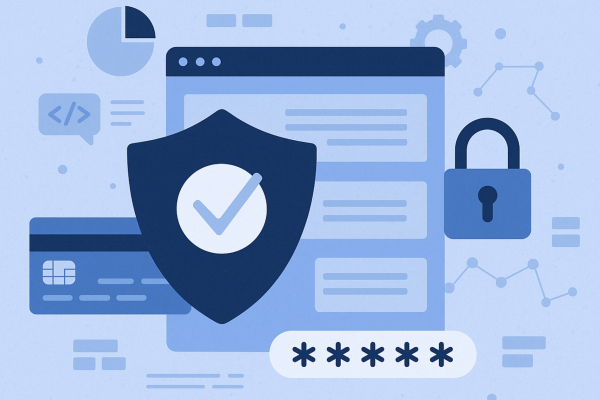How to Secure Cardholder Data for PCI DSS Compliance?
In today’s digital age, securing cardholder data is a critical task for businesses handling payment information. The PCI DSS compliance service in Mohali helps organizations meet stringent security requirements to protect sensitive cardholder data from breaches. In this blog, we will explore how to secure cardholder data, the best practices for PCI DSS compliance, and essential tips for maintaining data security.
What is PCI DSS Compliance?
The Payment Card Industry Data Security Standard (PCI DSS) is a collection of security guidelines aimed at ensuring that any organization handling the acceptance, processing, storage, or transmission of credit card information upholds robust security practices.
Why is Securing Cardholder Data Important?
Cardholder data is a prime target for cybercriminals. If compromised, it can lead to financial losses, legal penalties, and reputational damage. Ensuring compliance with PCI DSS standards safeguards your customers’ information and helps you build trust.
Key Requirements for Securing Cardholder Data
The PCI DSS has 12 main requirements grouped into six categories. For securing cardholder data, the following are most relevant:
Protect Stored Cardholder Data
Limit the storage of cardholder data to only what is necessary for business purposes.
Use encryption, tokenization, or hashing to render data unreadable to unauthorized parties.
Securely delete cardholder data when it is no longer needed.
Encrypt Transmission of Cardholder Data
Use strong encryption protocols such as TLS to protect cardholder data during transmission over public networks.
Ensure encryption keys are stored securely and managed properly.
Best Practices for Securing Cardholder Data
1. Implement Robust Access Controls
Limit access to cardholder data strictly to individuals who need it for their job responsibilities. Ensure that only authorized personnel can access sensitive information. Strengthen access controls by implementing multi-factor authentication (MFA)
2. Regularly Update Security Systems
Keep all software and systems updated with the latest security patches. This minimizes vulnerabilities that attackers could exploit to access cardholder data.
3. Conduct Regular Vulnerability Scans
Perform regular vulnerability scans and penetration testing to identify weaknesses in your security infrastructure. Address any vulnerabilities immediately.
4. Use Secure Payment Gateways
Partner with trusted payment gateways that comply with PCI DSS standards. These gateways handle the processing and storage of cardholder data securely.
Tips for Maintaining PCI DSS Compliance
1. Educate Employees
Train your staff on the importance of PCI DSS compliance and best practices for data security. Ensure they understand how to handle cardholder data securely.
2. Monitor and Log Access
Use monitoring tools to track access to cardholder data. Maintain detailed logs to detect unauthorized access and ensure accountability.
3. Regularly Review Security Policies
Periodically review and update your security policies to align with the latest PCI DSS requirements. This ensures continuous compliance.
4. Work with a PCI DSS Compliance Service Provider
Engage a trusted PCI DSS compliance service provider to assess your security measures and guide you in implementing best practices. They can help you identify gaps in your compliance strategy and provide tailored solutions.
Common Challenges in Securing Cardholder Data
1. Lack of Awareness
Many businesses underestimate the complexity of securing cardholder data. Lack of knowledge about PCI DSS requirements can lead to non-compliance.
2. Limited Resources
Small businesses often struggle with limited budgets and expertise to implement advanced security measures.
3. Complex IT Environments
Organizations with complex IT infrastructures may find it challenging to secure all points where cardholder data is processed or stored.
4. Third-Party Risks
Partnering with third-party vendors that do not comply with PCI DSS standards increases the risk of data breaches.
How PCI DSS Compliance Service Helps in Securing Cardholder Data
A PCI DSS compliance service offers professional guidance to ensure your organization meets all compliance requirements. Here’s how they help:
- Risk Assessment: Identify vulnerabilities in your systems and recommend improvements.
- Gap Analysis: Determine gaps in your current security measures and provide actionable solutions.
- Implementation Support: Assist in implementing encryption, access controls, and other security measures.
- Compliance Audits: Perform regular audits to ensure continued adherence to PCI DSS standards.
The Role of Technology in Securing Cardholder Data
1. Tokenization
Replace sensitive cardholder data with unique tokens that have no exploitable value outside the system.
2. End-to-End Encryption (E2EE)
Encrypt cardholder data from the point of entry to final storage or processing. This ensures data remains secure throughout its lifecycle.
3. Intrusion Detection Systems (IDS)
Deploy IDS to monitor network activity and detect potential intrusions in real time.
4. Firewalls
Implement firewalls to protect your systems from unauthorized access. Ensure firewall configurations comply with PCI DSS standards.
The Cost of Non-Compliance
Failing to comply with PCI DSS standards can lead to severe consequences, including:
- Financial penalties from payment card brands.
- Loss of the ability to process credit card transactions.
- Damage to your brand’s reputation.
- Increased risk of lawsuits and legal action.
Investing in a PCI DSS compliance service is far more cost-effective than dealing with the aftermath of a data breach.
Steps to Achieve PCI DSS Compliance
- Understand PCI DSS Requirements: Familiarize yourself with the standards and requirements.
- Conduct a Self-Assessment: Use the PCI DSS self-assessment questionnaire (SAQ) to evaluate your compliance level.
- Engage Experts: Work with a PCI DSS compliance service provider for professional guidance.
- Implement Necessary Changes: Address gaps identified during the assessment and implement required security measures.
- Complete the Attestation of Compliance (AOC): Submit the AOC to validate your compliance with PCI DSS standards.
Conclusion
Securing cardholder data is not just a legal requirement; it’s a critical component of building trust with your customers. By adhering to PCI DSS standards and leveraging a PCI DSS compliance service, you can safeguard sensitive information, protect your business from breaches, and maintain a strong reputation. Follow the best practices outlined above to ensure your organization achieves and maintains PCI DSS compliance effectively.
Author







